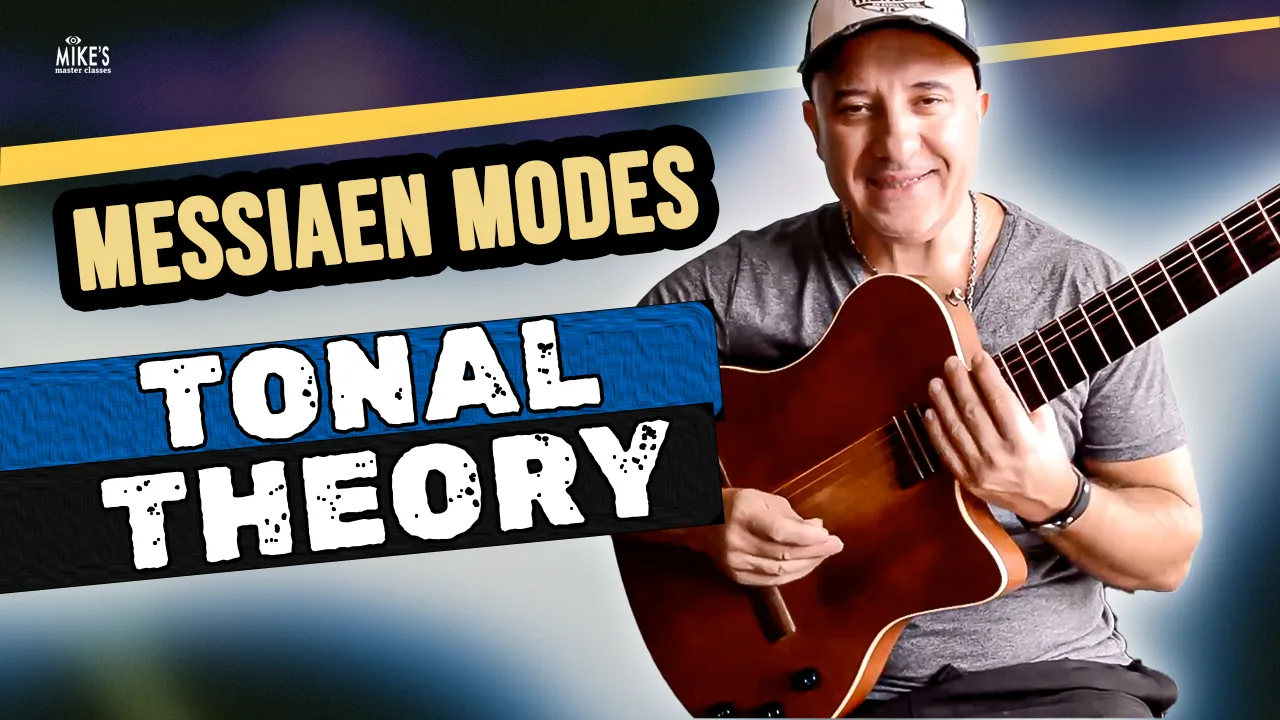Olivier Messiaen, a renowned French composer (1908-1992), discovered and compiled the Messiaen Modes, a collection of the only symmetrical series that exists. These modes consist of seven series or scales, including non-chromatic scales such as the Whole-tone Scale (mode 1) and the Diminished Scale (mode 2). The remaining four modes are both chromatic and symmetrical.
This video lesson discusses modes 1, 2, and 3, as well as tonal and post-tonal theory. Messiaen was particularly fond of these series because they lack a root note, making the music post-tonal, a term coined by Joseph N. Strauss in his book Introduction to Post-tonal Theory.
The seven Messiaen Modes produce an extensive range of chords, arpeggios, sub-modes, and other elements that can be applied to music to refresh one’s style. By studying these modes, one can gain a better understanding of 20th-century orchestral music and modern fusion, such as that of Holdsworth and Tim Miller.
The lesson covers modes’ reharmonization with tertian and quartal triads, tetrads, chromatic chords, trichords, patterns, cadences, voice movement, phrases, and deep theory comprehension.
Future video lessons will cover the remaining modes and the modes of the Messien Modes. These fascinating series, scales, or modes offer a captivating new world to explore.
Juampy Juarez
Advanced
Running time: 1 hr 4 minutes
15 Pages PDF Included (Note: Content written in Spanish)












Another excellent course
Another excellent course from Juampy. He shows plenty of examples and how he extracts a harmonic language from the mode, as always it’s up to the player to explore and get the real value from this. Hopefully we’ll see an exploration of the other Messiaen modes in future videos.
by Aloysius LeesonWhy the PDF explanation is not in English?
by William Vaz